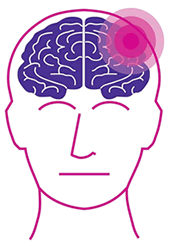3. Practical advice and tips for carers
Physical deficits
Table of Contents

- Sensation
- Treatment options and tips for altered sensation - 1
- Treatment options and tips for altered sensation - 2
- Care of the affected arm
- Care of the affected arm video
- Care of the affected arm - The Stiff Arm
- Care of the affected arm - how therapists can help
- Care of the affected arm- Do and Don't
- Positioning in a chair and bed video
- Balance and mobility
- Effects of stroke which may make balancing and regaining mobility difficult.
- Sitting balance
- Standing Balance
- Weight transfer
- Walking
- Walking with an AFO (Ankle-Foot Orthosis) video
- Getting up and down stairs video
- How can you assist with regaining mobility?
- What might stop you walking independently after stroke?
- Falls prevention
- Falls - What to do
- How to help if someone you care for has a fall
- What should I do/not do following a fall?
- Questions about balance, mobility or falls?
- Summary
Posted in Physical deficits
Tagged Acupuncture, AFO Ankle foot orthosis, Anxiety, Balance, Botulinum Toxin, Care of the affected arm, Carer training, Central post stroke pain, Circulation, Concentration, Coordination, dyspraxia, Eating, Exercise, Falls, Falls film clip, Falls prevention, FAST, Fatigue, FES Functional electrical stimulation, Flaccid, Foot care, Functional Electrical Stimulation, Hoists, Hypersensitivity, Inattention, Increased tone, Insight, Low tone, Massage, Medication, Mobility, Motivation, Moving and handling, Muscle tone, Orthotic Devices, Pain, Pain management, Paresthesia, Passive stretching, Physiotherapist, Physiotherapy, Positioning, Proprioception, Relaxation, Sensation, Sitting balance, Slings, Spasticity, Spastic muscle, Splinting, Splints, Stairs, Standing, Standing aid, Stiff arm, Strapping, Subluxation, TENS ( Trans cutaneous electrical nerve stimulation), Transfers, Walking, Walking aids, Weight transfer,